Noëlle Cuppens is a versatile artist who makes the articulation of line the essence of her art.
Her work is based on photographs she takes of chance encounters, disruptive situations or just scenes from everyday life. In addition, she collects texts, words that she hears in passing on the street, compelling excerpts from books or own musings about what she sees.
In this interview, Noëlle discusses the clean line and how she develops her art from this simple starting point. She reveals why sketching is an important part of her process and which techniques she prefers to bring these delicate and thought-provoking images to life.
No barriers
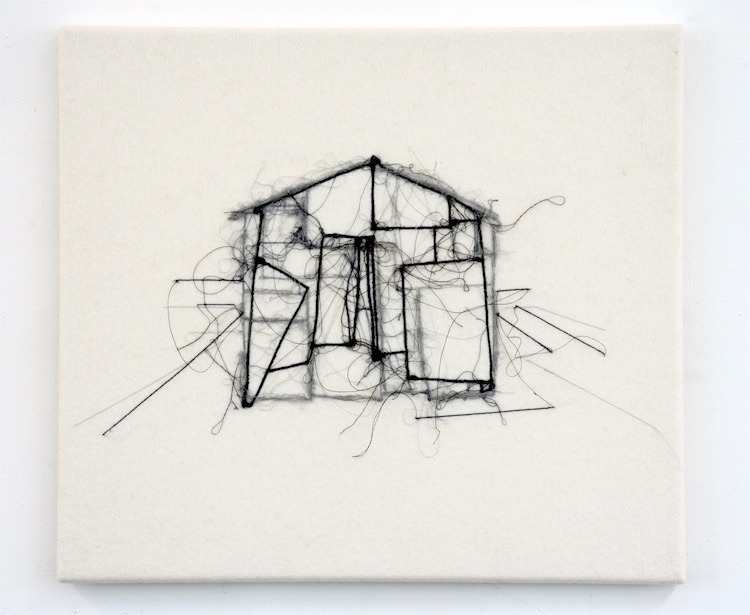
TextileArtist.org: What initially attracted you to textiles as a medium?
Noëlle Cuppens: The articulation of the line is the essence of my work. I draw with different materials like graphite, pencil and the sewing machine. A line with yarn has its own language and it’s own sharpness and intensity. Amongst a lot of other materials, I use felt for its flexibility and semi-transparency.
When I make stitched drawings on felt with the sewing-machine it feels like being in a dialogue with the machine, never knowing exactly what comes out of it which often opens new possibilities. This can be either on felt or on paper, there are no barriers for me concerning mediums.
What was your route to becoming an artist?
I did my bachelor in drawing and printmaking at the Art Academy St Joost in ‘s- Hertogenbosch and post-academic at the Jan Eyck Academie in Maastricht. During my bachelor I went for an internship to the Glasgow School of Art.
I since did several residencies in London Ontario, Canada and New Foundland, Canada and in Osaka/ Kyoto, Japan where I also exhibited my work, next to many places in NL and Europe. My work developed very broadly, starting from drawing and printmaking into photography, to installations in and outdoors.
The last couple of years I work mainly on felt and paper, using various techniques, depending on the project I’m working on. Recently I made an artist book The Last Pages based on the rediscovery of an old set of Letraset Dry transfer Lettering Sheets. With these letters, I re-wrote the last book of the French writer Marguerite Duras: C’est Tout.
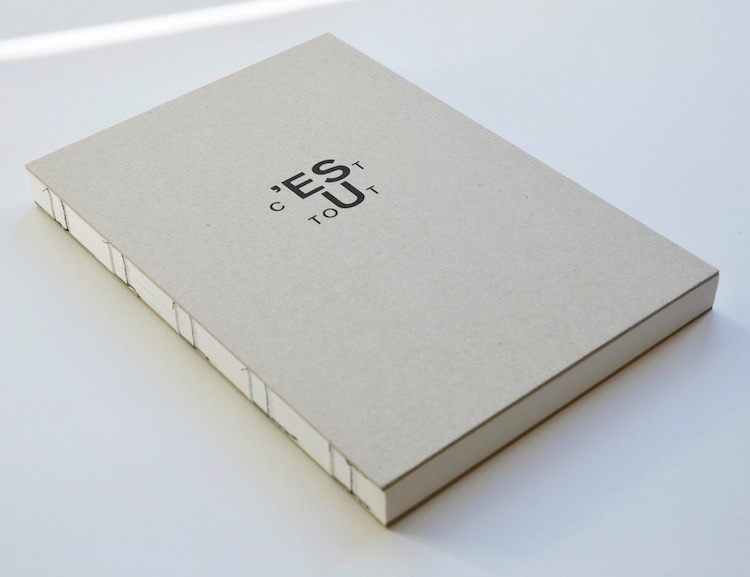
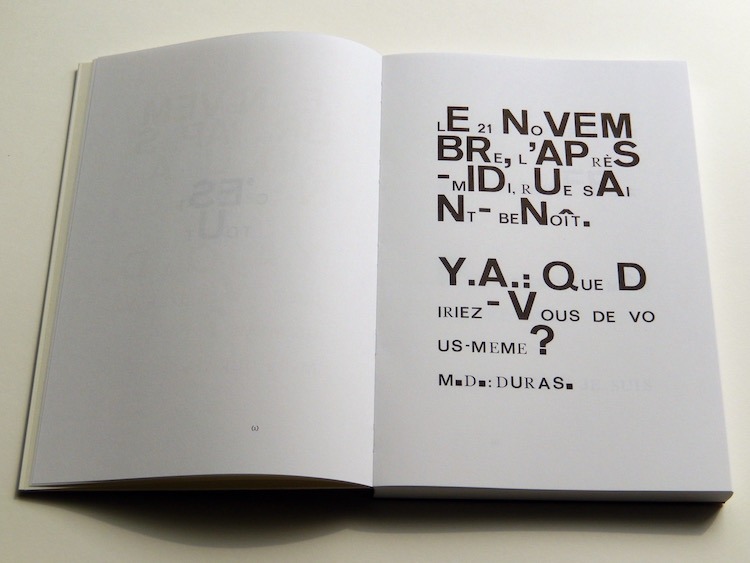
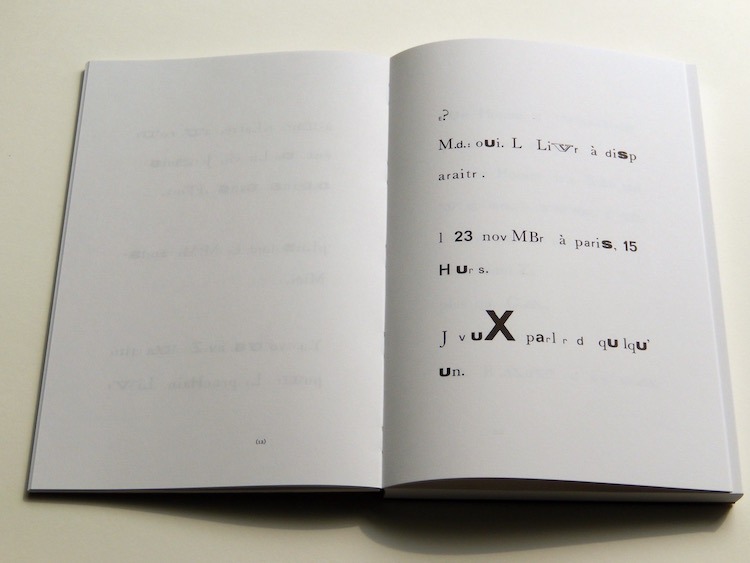
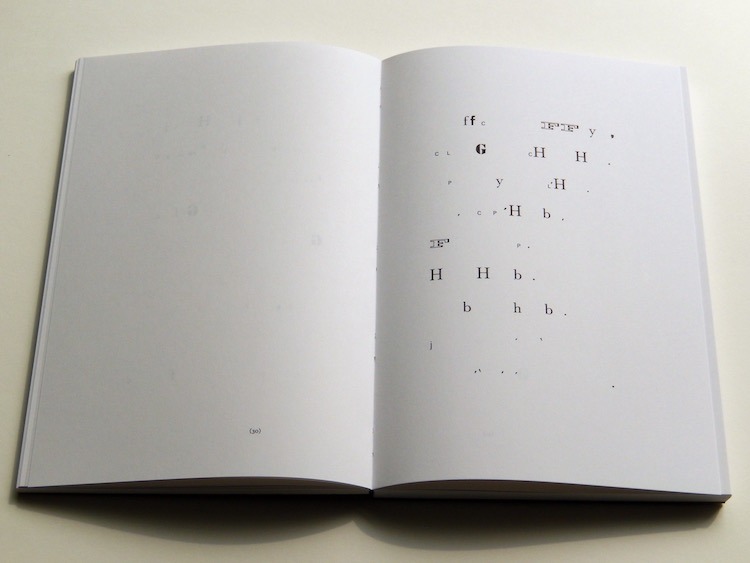
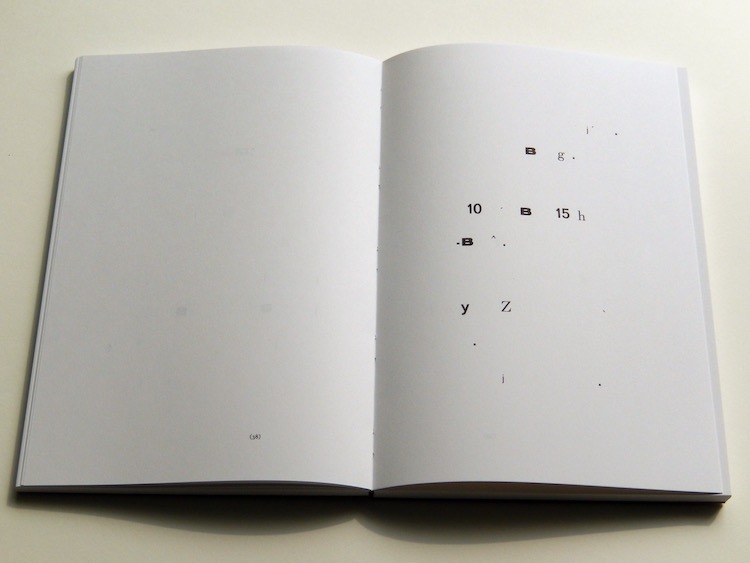
Stretching the possibilities
Tell us a bit about your chosen techniques.
I use a wide range of techniques depending on the language I want to speak and the expression I want to give the work.
For example, when I work with stitching on felt I like the unpredictable character of the line, sometimes it has loops because the tension of the machine is not correct, but I like to use that, things come out in a different way and change the way I planned to go.
The same thing happens when I work with pencil or acrylic on paper, a hand-drawn line has a different feeling than a line made with a ruler. I have periods that certain techniques are in my field of vision and I extensively stretch the possibilities of these techniques, making small changes with each work.
Also in periods when I work mainly on paper with colour pencil, marker and paint, I suddenly feel for a stitched line because of the sharpness and intensity of the line, like in the works Le Complementaire, La Liaison 1.
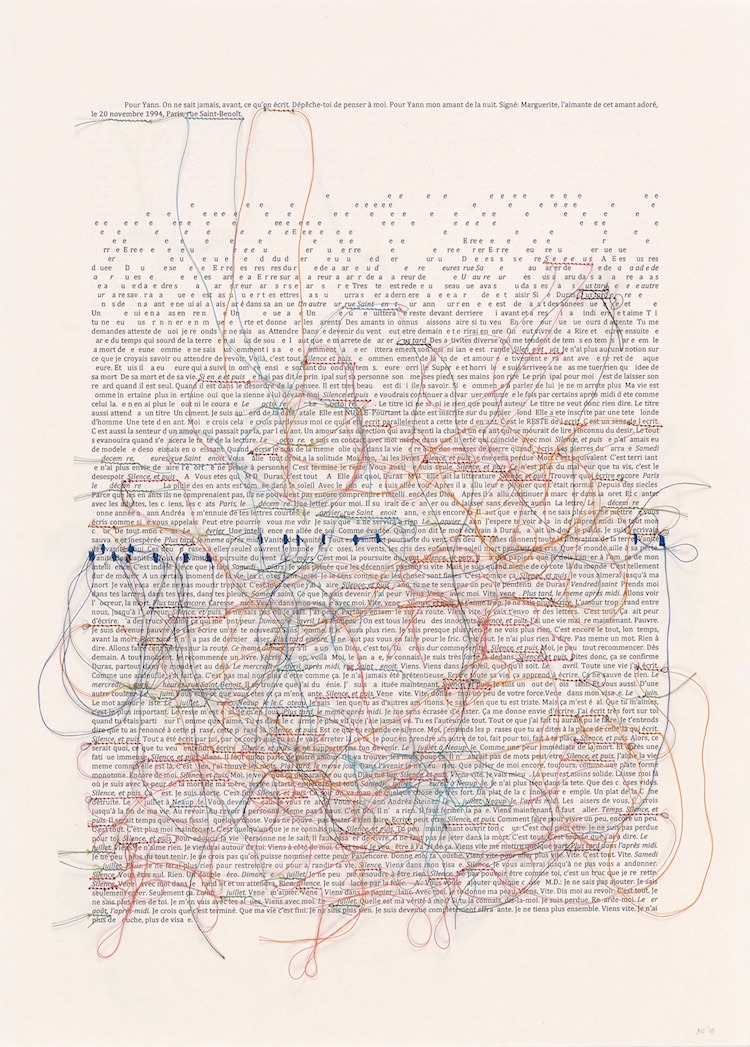
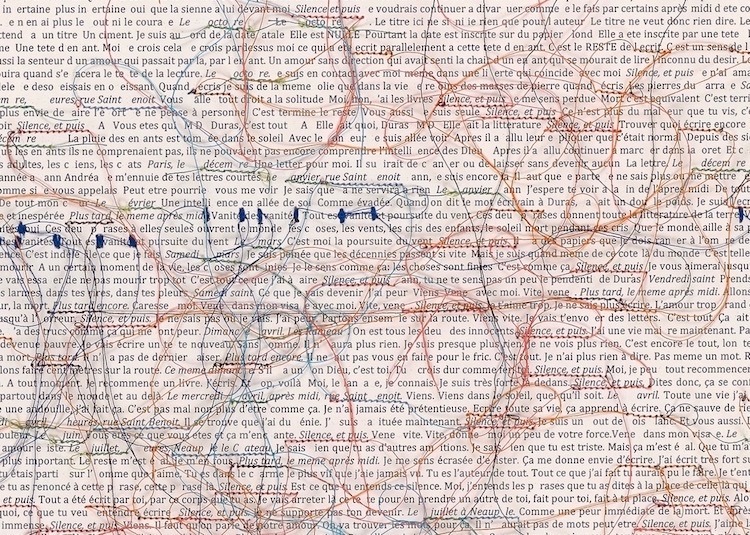
In here I both used yarn for emphasising certain words Marguerite Duras repeatedly uses in her book C’est Tout, the book I turned into a long term project last year.
On the opposite, I used yarn in a collage entitled TLP. Voor Yann, for both practical reasons, connecting, next to esthetic reasons, rhythm. So for me, techniques mainly support the content of the work and carries me through the process of making and thinking about the concept of the work. The continuous balance between the mind and the hand.
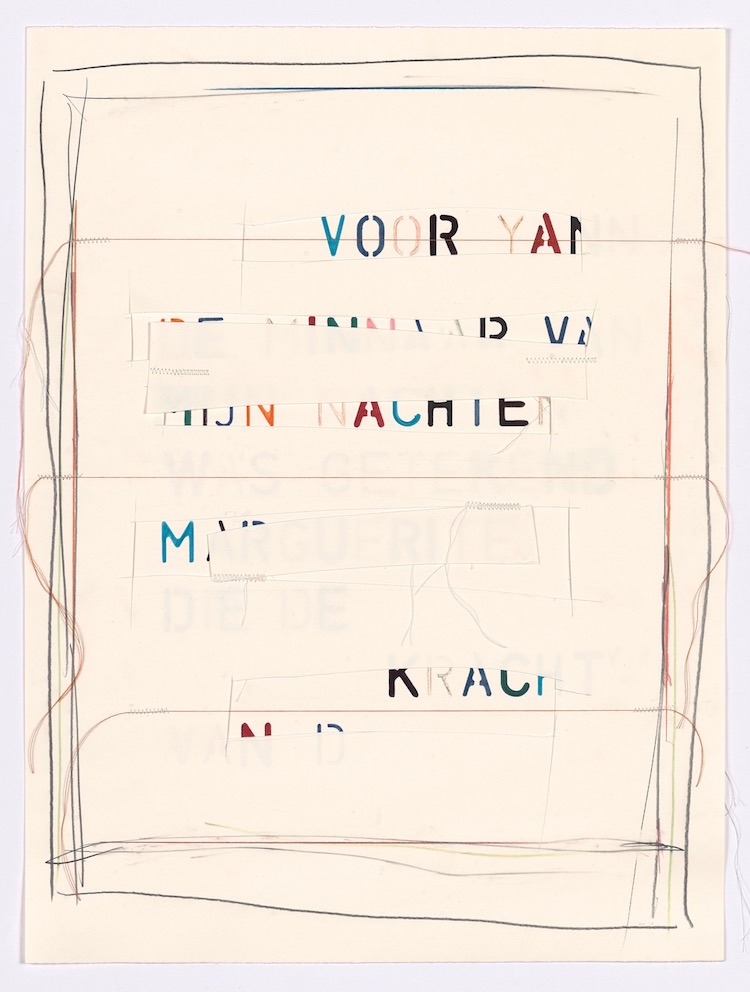
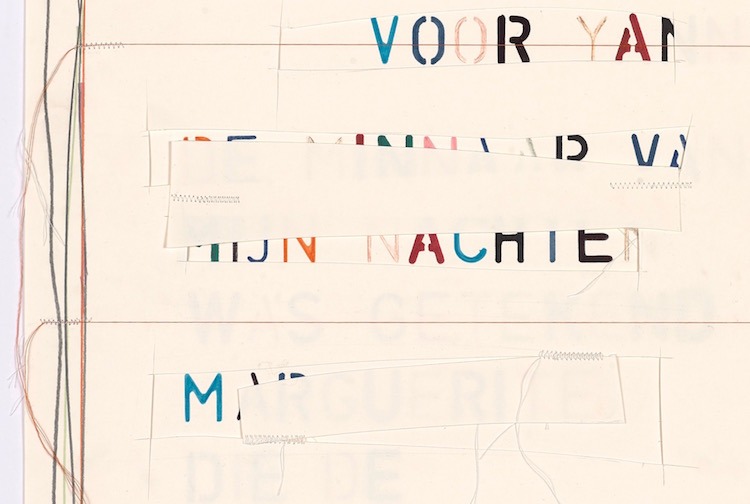
Reinventing yourself
How would you describe your work and where do you think it fits within the sphere of contemporary art?
Mixed media, autonomous art.
Do you use a sketchbook? If not, what preparatory work do you do?
I make a lot of sketches and studies on separate papers, trying shapes, techniques, thinking by making, getting a feeling for the way I want to go.
In here technique is a very important way of thinking for me: the expression of certain materials, the language of the line, drawing with whatever material, whether this is a stitched line, sometimes without thread, just little holes in paper, a pencil line, or painted.
I have an archive of my own made pictures of things I see while traveling, being on the road etc. Also texts or words I read that keep hanging in my mind. All available material is always around me in my studio.
Preparing starts on all occasions, I can be at home, or read a word, or during my working out. An idea sets in my mind and goes along with me, like breeding, chewing on it over and over again.
The making I do in my studio, that’s where things start to settle, and reality turns in: idea’s become more real, I start making studies, then it becomes tangible, the process then is very intuitive, it leads itself. I never know beforehand where things end, making art is not mathematics but inventing yourself over and over again, it’s never finished.
Tell us about your process from conception to conclusion.
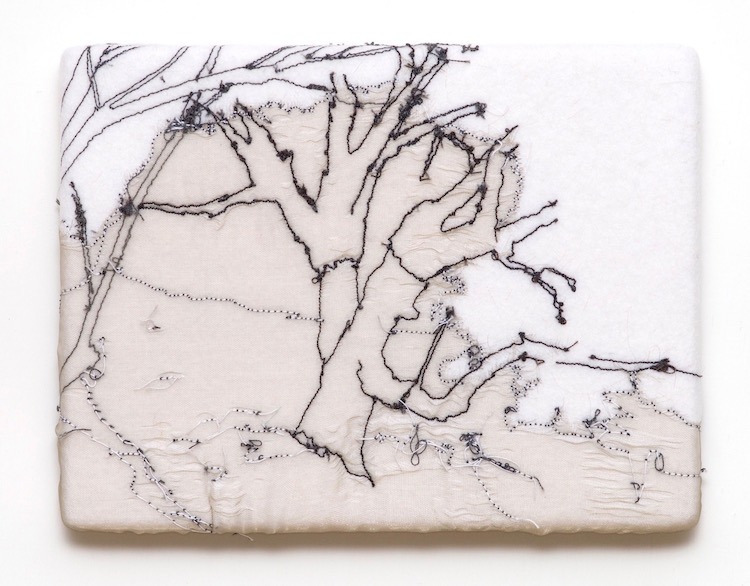
Depending on the work I make, I always have a sort of concept. Sometimes the concept is an idea that gives a lot of space. For example the work Nimmermeer, an installation with 45 little embroidery work on felt around the theme trees.
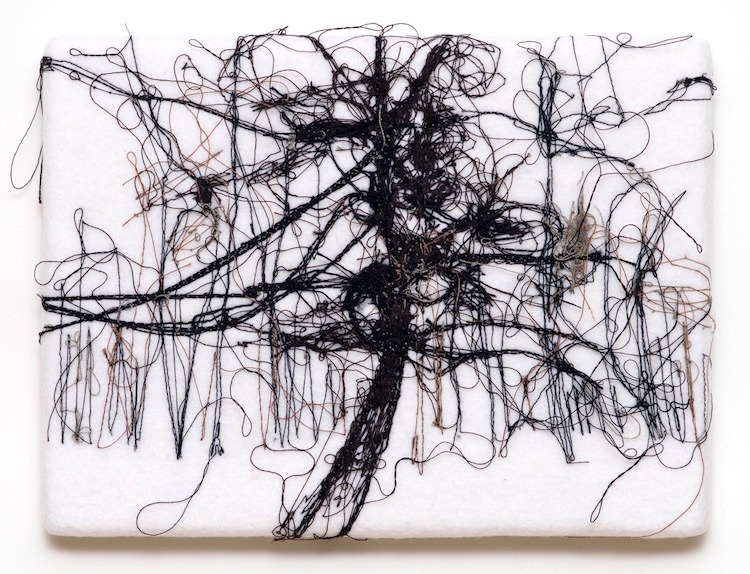
For years landscapes and especially trees were a leading inspiration, the different characters of trees, standing alone or among others. I wanted to make a turn and decided to make a series of farewell to the theme and started making little works based on my archive of trees. These pictures were the start for stitched drawings on felt, using the sewing machine for the expression by combining large stitches with very small, thick and thin yarn, being precise versus going wild on the machine.
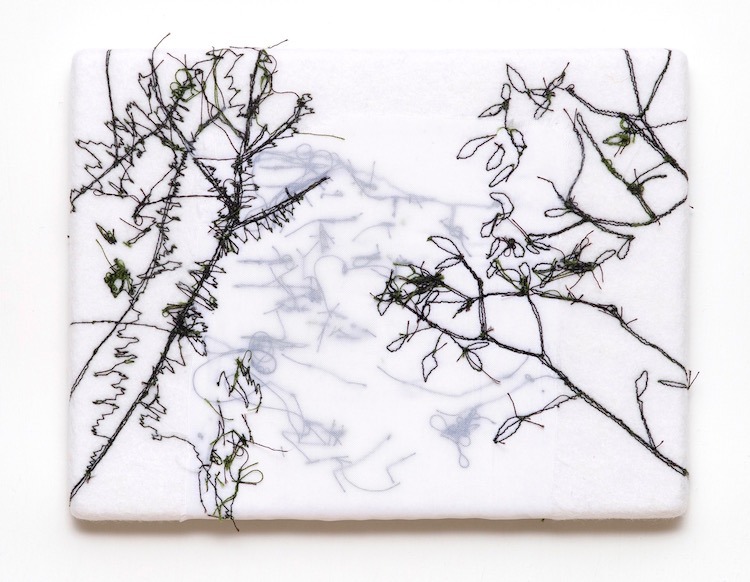
Sometimes I added hand sewn lines, for a different atmosphere. Nimmermeer is the title for this work and means Never Again, a word I read in a book of René Daniels, a dutch painter whom’s work I admire. Nimmermeer can always be turned into Immerweer which means Ever Again…
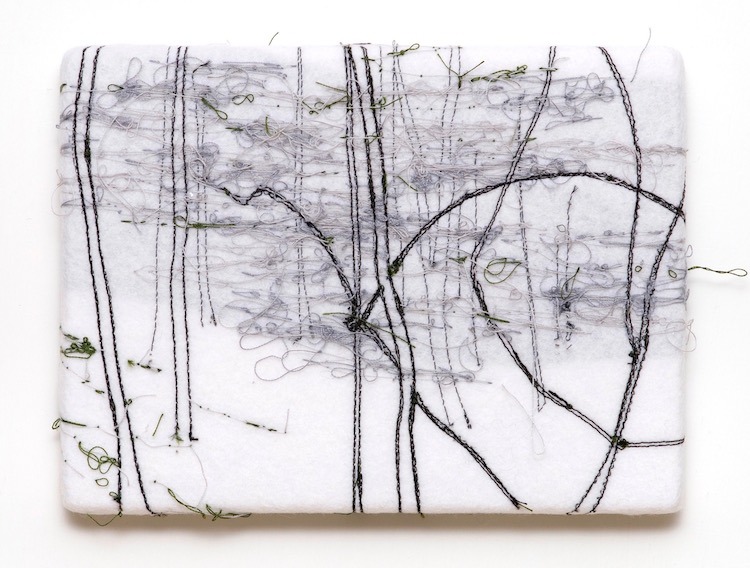
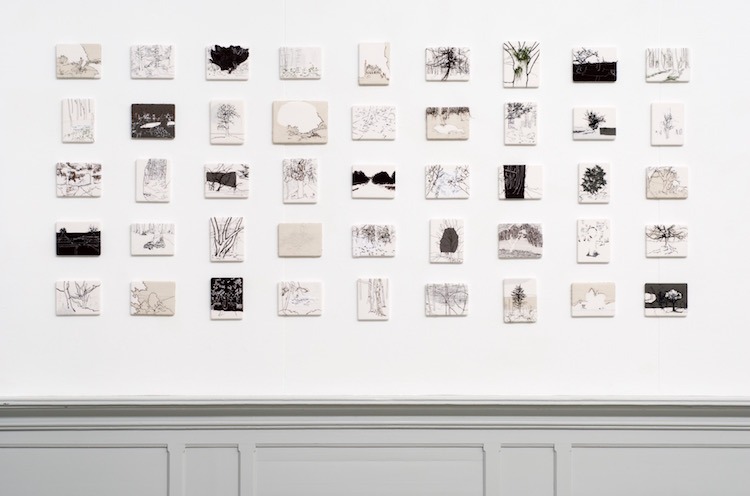
Vanishing text
What currently inspires you?
At the moment I work with texts from the French writer Marguerite Duras. She’s been an inspiration for many years. It’s not so much of the stories she writes but the rhythm, the repetition, which is like chewing on language. I recognise the way she uses language with the way I make work. I like language and letters as images.
One day I recovered my Letraset rubbing letters I had from many years ago. This recovery was a major turn in my work: I started to look back on both my career as an artist and also on the time we live in and the speed in which the digital world overrules the analog one.
With the recovered Letraset transfer lettering I re-wrote Duras last book C’est Tout, a booklet in which she describes her fear of death and the approaching farewell to Yann Andrea Steiner, her love and muse. Since I had only a few sheets left, the language slowly disappears in my version of the book (see previous for images).
In this project I worked very conceptually and systematically, later I turned it into an artist book. But as an opposite of working so systematically, I made works on paper based on the discoveries I did during the process in which I worked more intuitively using old markers and pencils and the sewing machine.
I made a series on riso prints of the text that vanished in the book: The Complementaire. Her vanished text became visible again and I accented the words she used repeatedly, connecting them with thread, like a network. Then I discovered that also the backside was interesting, so I made another one in which the colours of the lines and the connections are a playful image.
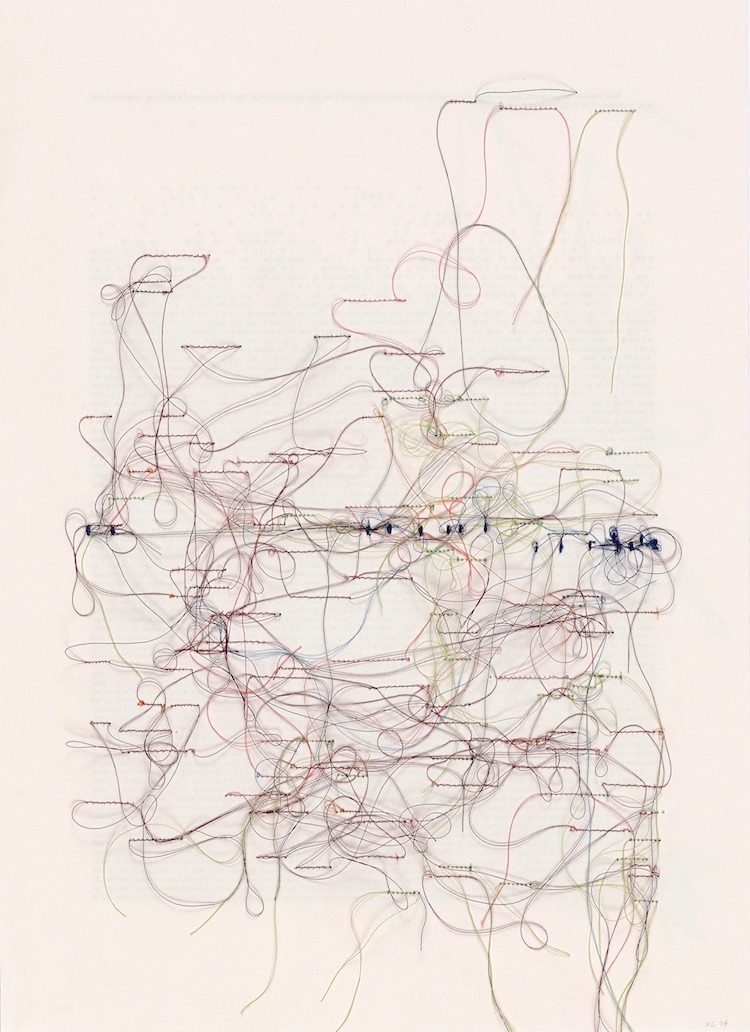
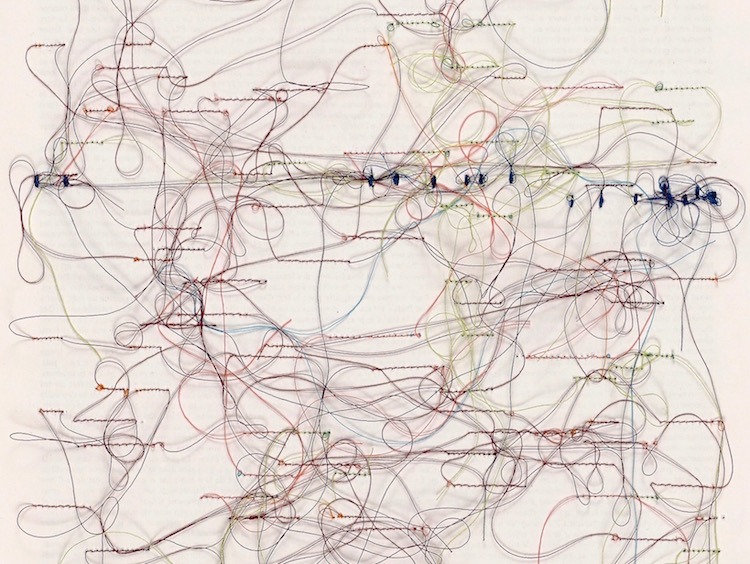
Who have been your major influences and why?
Writers like Marguerite Duras, Witold Gombrowicz, P.F. Thomése and the painter René Daniels. Concerning the writers, it means not literally but I recognise the rhythm, the repetition, the absurdism, for René Daniels the ability and balance of story-telling and strokes of paint in his older work.
Tell us about a piece of your work that holds particularly fond memories and why?
My artist book The Last Pages which is described above is one of these works: by accident, I found these Letraset dry transfer lettering sheets and in a split-second, my whole focus of work changed.
Last month I was invited to be part of Let it keep secrets, a festival around the work of Michael Gibbs. With his lettering sheets, I re-enacted his performance Ad Nauseam, a performance he did in Toronto in 1977, saying the words Ad Nauseam for a long time.
In my re-enactment, I was rubbing these words with his lettering sheets for several hours in a row. Suddenly I found myself as a performer, which was a new experience. Making art is a fluid process and I always like to make new steps, discovering new things not knowing where it will take me.
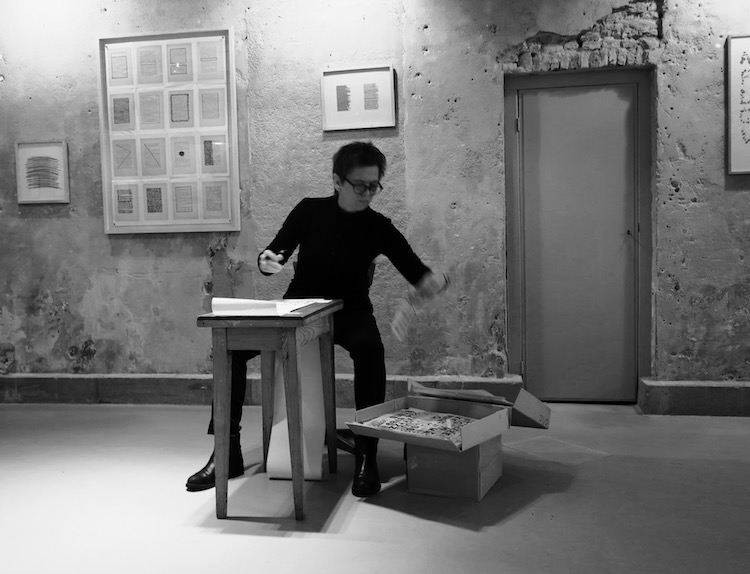
How has your work developed since you began and how do you see it evolving in the future?
I work in cyclic movement, images and themes appear repeatedly in other guises. Works and projects often start intuitively and there’s a wide range of possibilities coming on my way.
For example, in 2005 I did a workshop with the theme mobility in reply to the work of Panamarenko who simultaneously had a show there. Beforehand I made a museum of white protecting felt for the collection of sculptures the kids made with knitting needles, satay-sticks, cloth and tape.
Each night I painted these results dark blue to make it into a real collection of works. After one week the exhibition was ready and open to the public for a couple of hours. In order to continue this very short moment, I decided to make permanent works based on the photos of the project. That’s when I started making series of embroideries on felt.
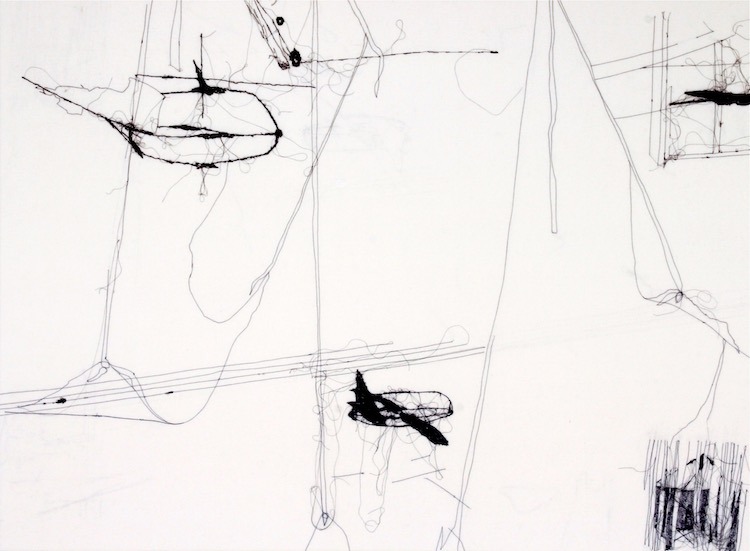
This was one of those moments that I was at an intersection or a junction in my work that changed the way my work developed. For many years I chewed on my archive of former short-term projects and archive material, making them into permanent works on felt.
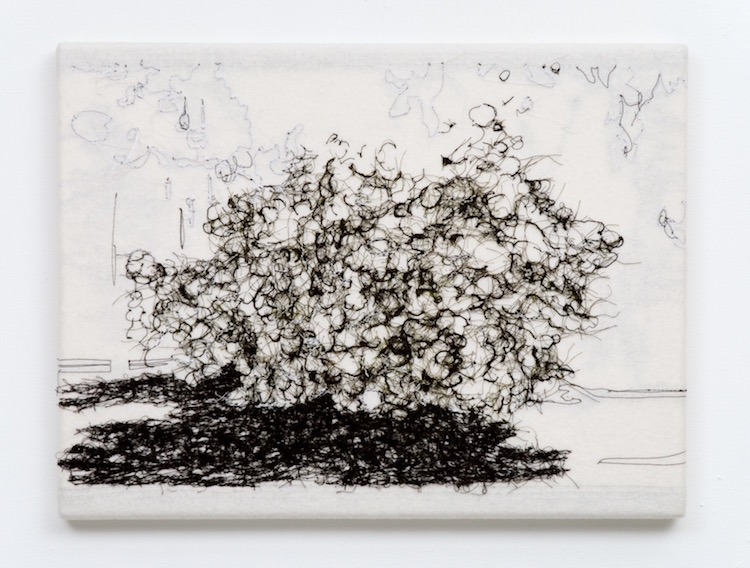
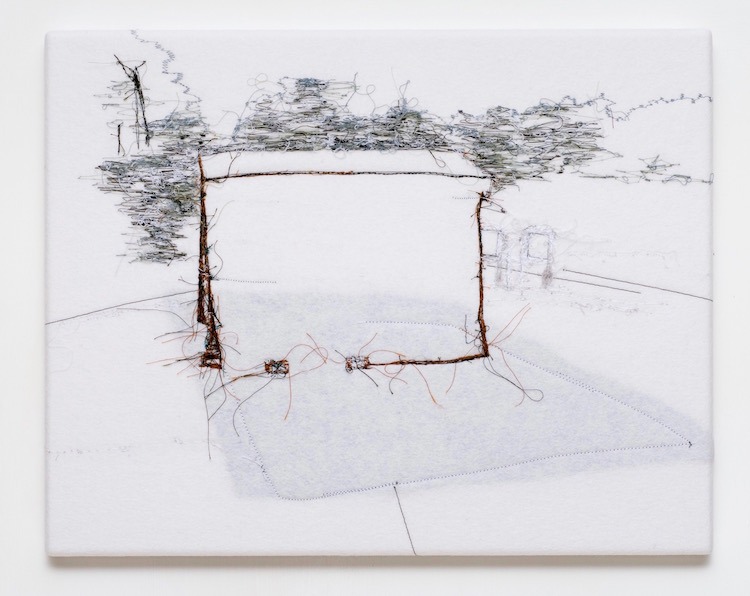

The moment I had the feeling I knew the language of the medium too well I changed my focus and started to work on paper. The variety of possibilities of material is important to me, acrylic, pencils, glue felt and yarn was a delight at that moment. I extensively explored my varied archive with techniques on paper, showing them in installations on the wall.
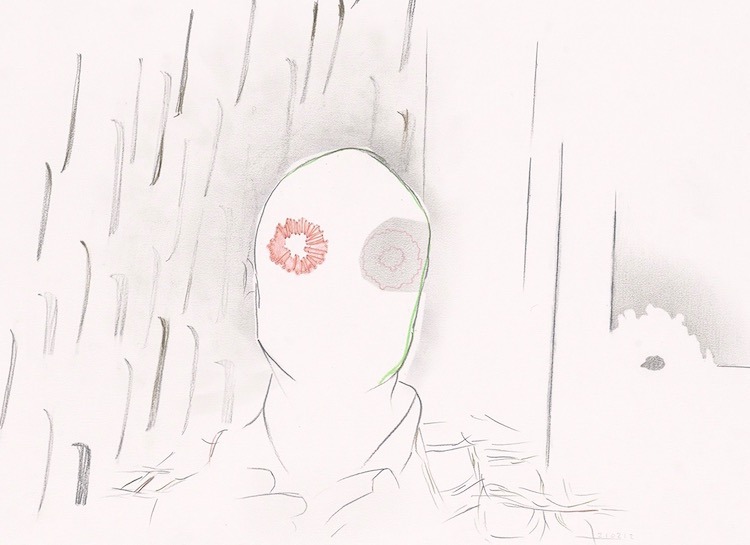
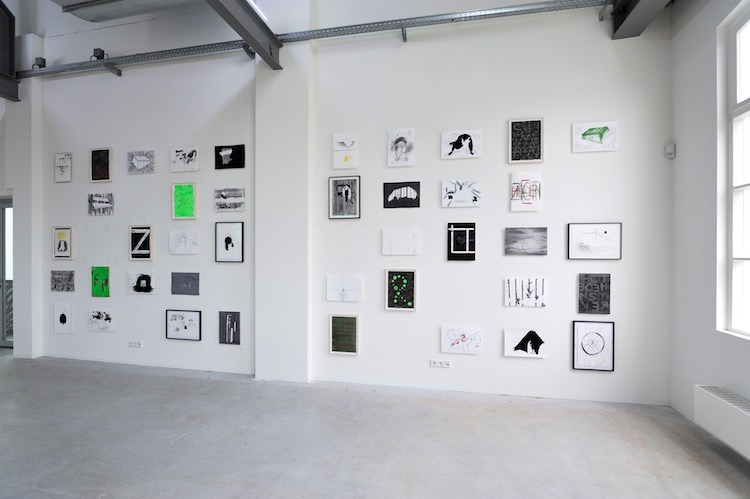
Slowly my attention went from my own photo archive to language and more exact words. Then one moment I found my lettering sheets which took me back to the project The Last Pages with my artist book and exhibitions of works on paper.
The shows were at SBK Amsterdam and Jan van Eyck Academie in Maastricht, the institute where I printed my book and where I studied 25 years ago, talking about cycles….
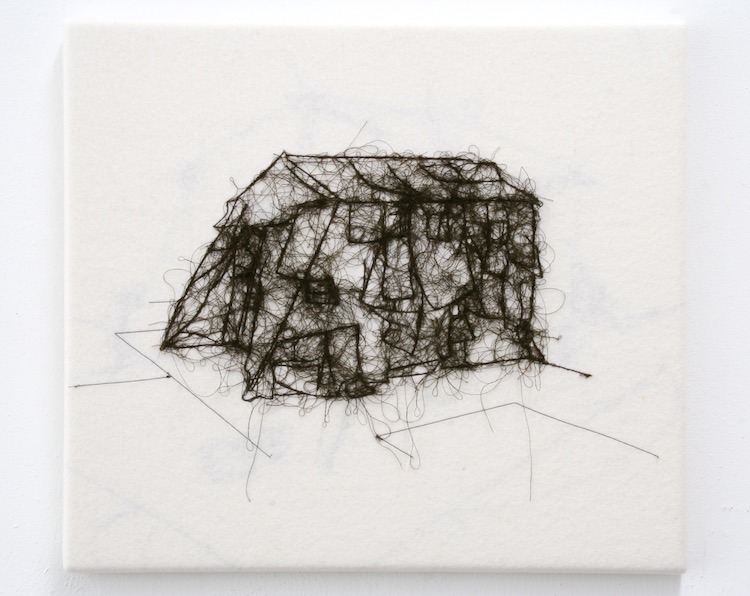
What advice would you give to an aspiring textile artist?
Keep on discovering your technique in combination with your conceptual development.
Do you give talks or run workshops or classes? If so where can readers find information about these?
I teach art at the Willem de Kooning University in Rotterdam, NL.
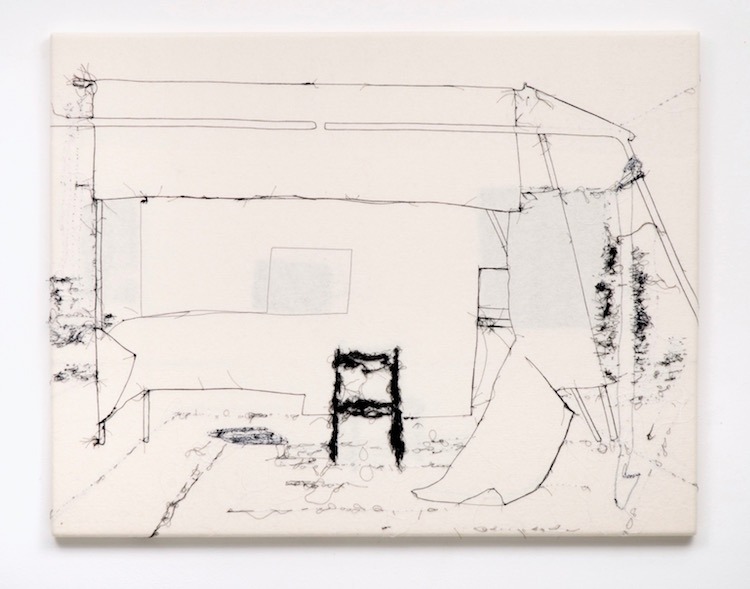
How do you go about choosing where to show your work?
It depends on the projects I’m working on and the spaces that come on my way as my work is very diverse, also the project spaces differ a lot.
Where can readers see your work this year?
In the beginning of July, I will be joining in a festival around the work of Marguerite Duras, in Duras, France. Visit www.hwimkranendonk.nl/tekenaars and www.kunstblijfteenraadsel.nl for more information.
At the moment I’m working on a new series of work, dates for exhibitions are in negotiation.
For more information visit: www.noellecuppens.nl
Let us know what your favourite aspect of the artist’s work is by leaving a comment below.
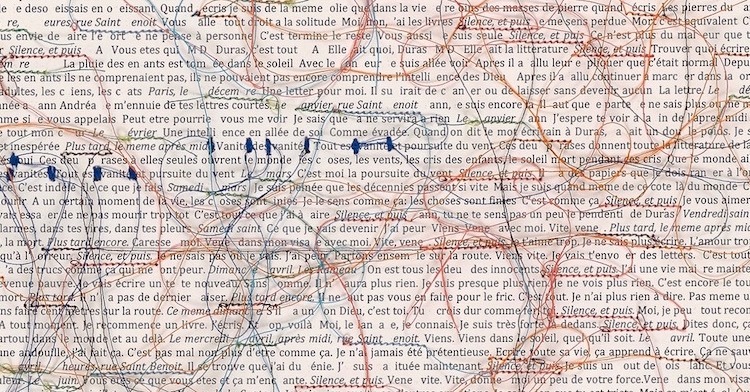

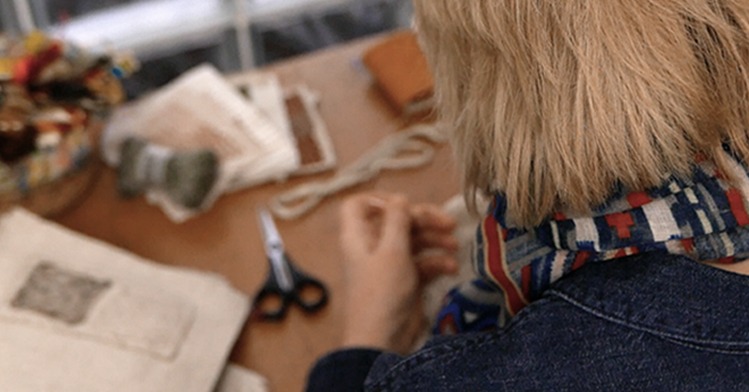
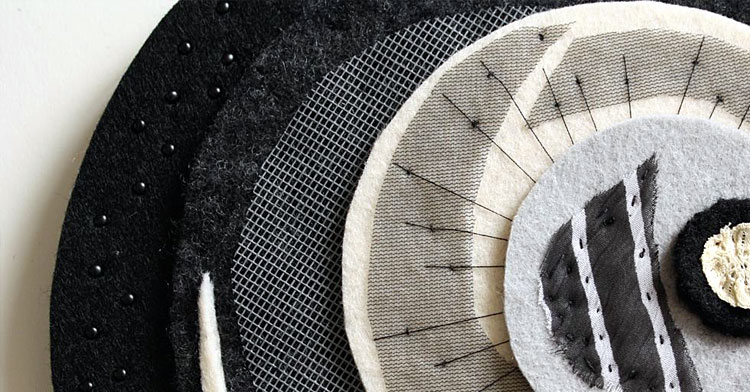
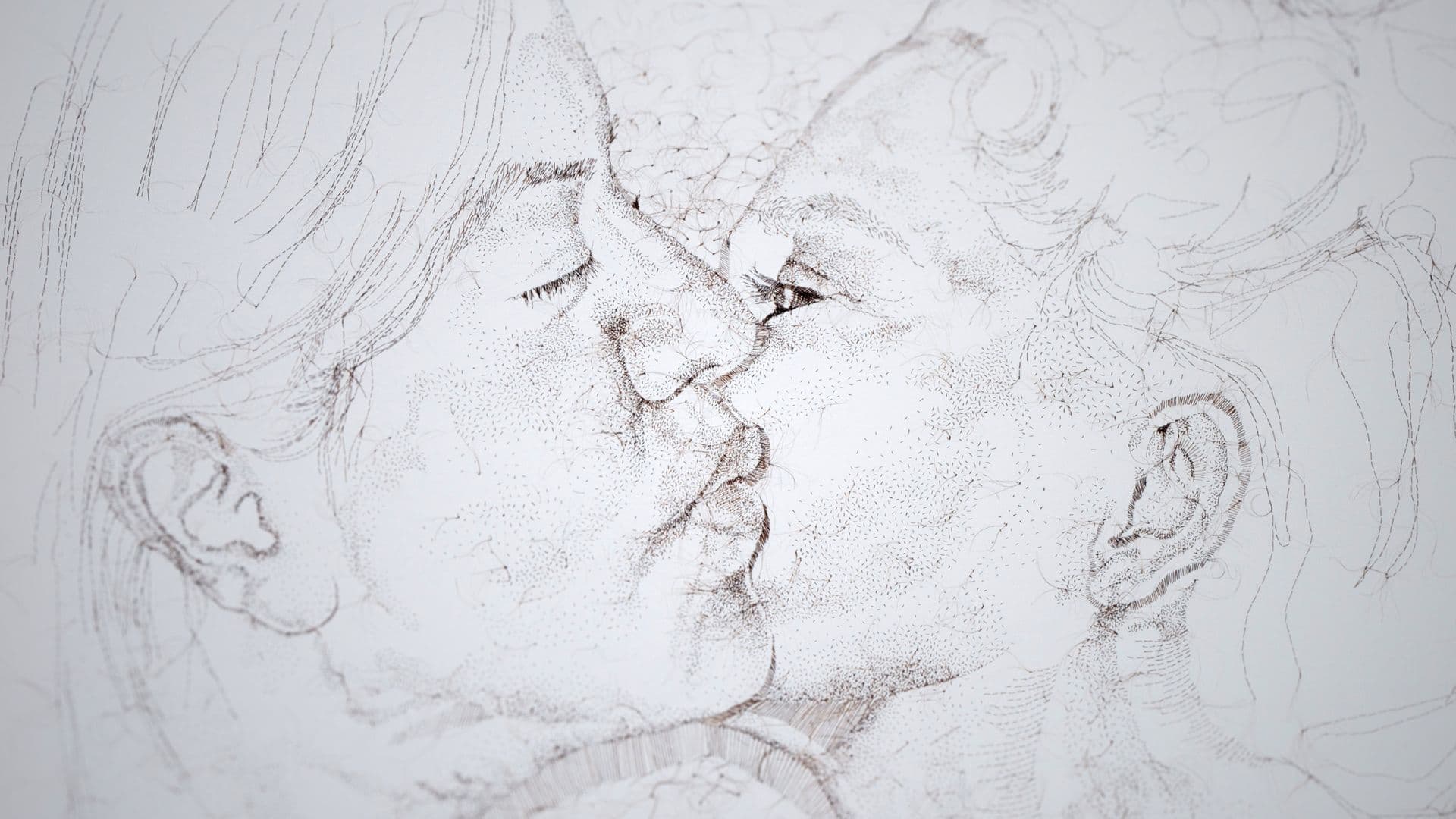
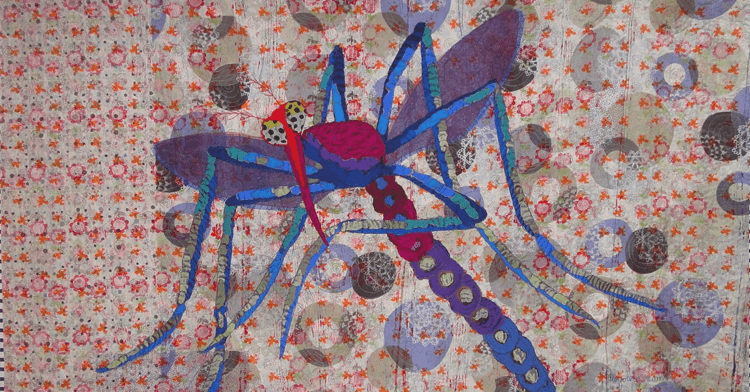
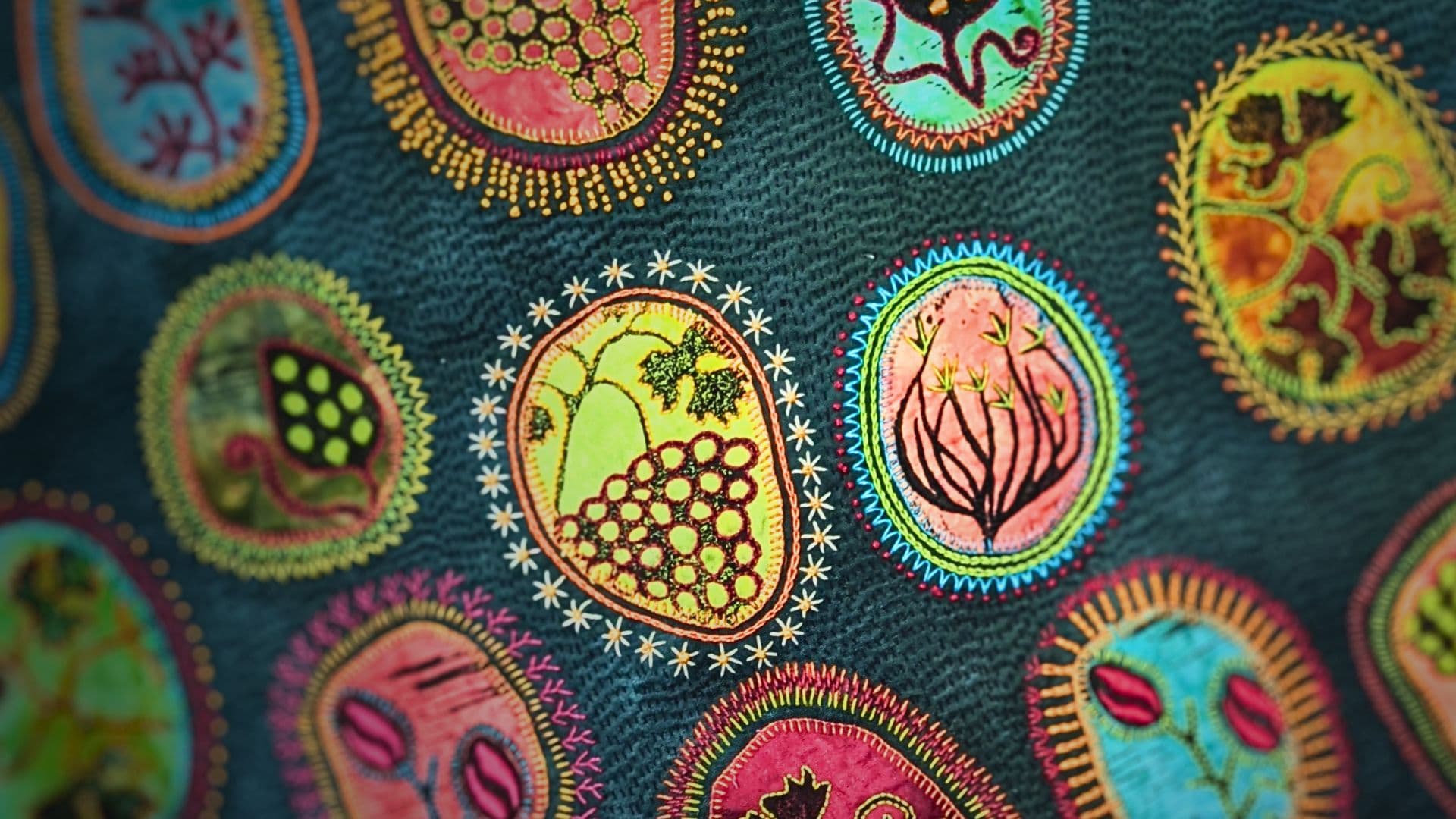
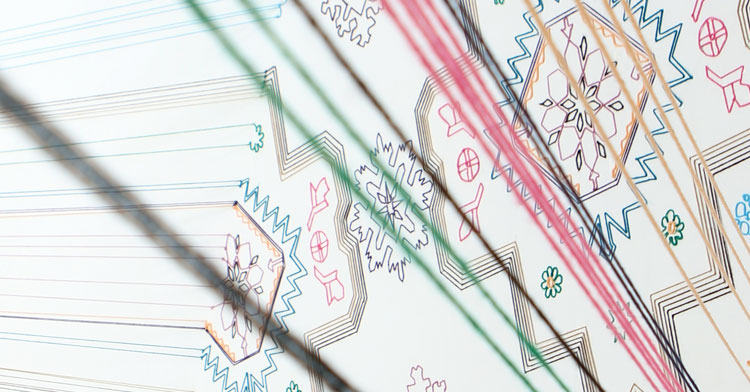
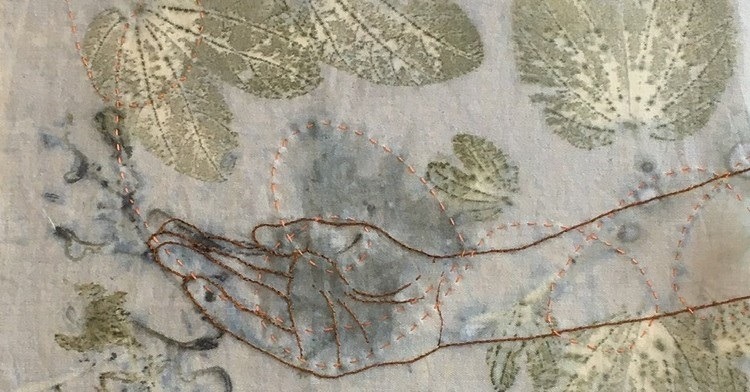
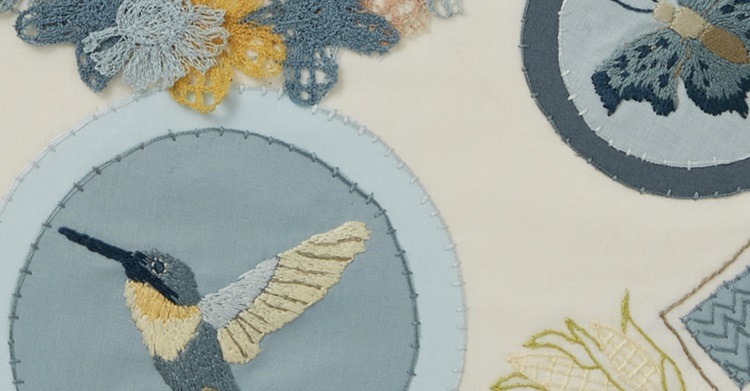
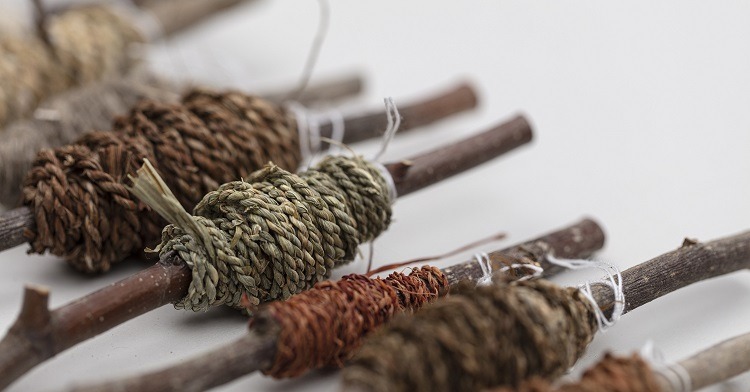
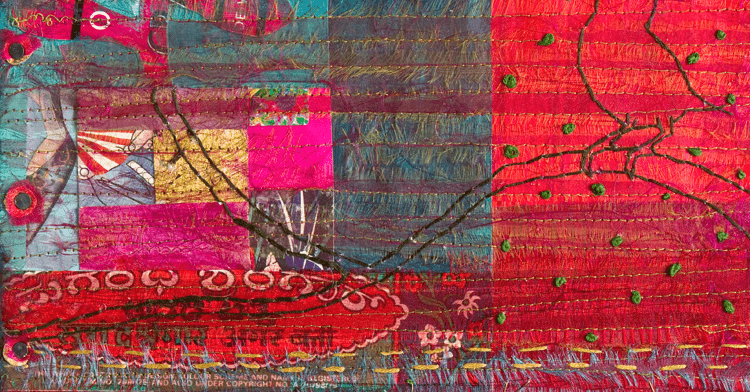
Comments